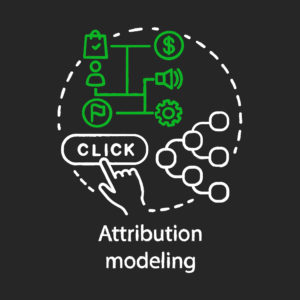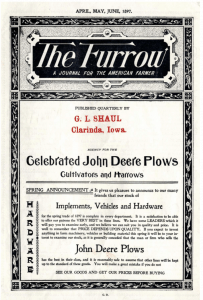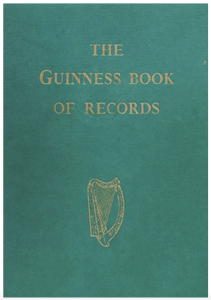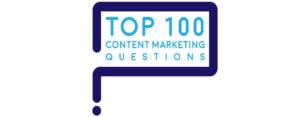
“What are the most effective content marketing campaigns of the past? That is, how do you prove results?”
A marketer at New York Life Insurance asked this question, one of the Top 100 Questions on content marketing.
Here are 5 ways to prove content marketing is working.
Any one is sufficient, but two or more will make your case for content even more convincing.
1. Trace customers from content discovery to profitable sales.
To prove your content marketing results, the best approach is to show sales and profits drive content.
It’s easier to prove content marketing results when they’re isolated from other marketing activities. For example, you can get a pure read on the impact of content marketing when you run a pilot project to:
- Address a test market where all marketing is content-driven.
- Introduce content-driven marketing to adopt an “orphan” market that’s had zero marketing support for at least a year.
- Enter a new or adjacent market with content-driven marketing, an approach that many challenger brands use.
To prove in content marketing results, establish consistent metrics and targets up front in your written strategy. Use our free 1-page template to create your written strategy, which will put you a step ahead of most competitors.
Measure regularly (quarterly or monthly) to determine whether your content is gaining readers, subscribers, customers and revenue as spelled out in your content strategy.
Remember, it’s not always easy to sort out the contribution of content marketing from advertising, promotions and other marketing – and that’s especially true for consumer marketers. In fact, attribution is the #1 content marketing pain point for consumer marketers.

Advanced measurements calculate ROMI (return on marketing investment), a more precise measurement than ROI. Here’s how to set up and improve your content marketing measurements.
2. Create content to enter or grow a new market.
To prove your content marketing results, create content that helps your company break into a new or adjacent market.
Back in the year 1900, the brothers André and Édouard Michelin were in the business of manufacturing bicycle tires. Their dream was to expand into the market for car tires.
But at the time, cars were a complete novelty, with only 3,000 cars roaming the roads of France.
Drivers used cars to take the family out to a nearby park for a Sunday picnic. But since people’s ranges had been so limited before cars came along, drivers had no idea where else to go, or how to get there.
They needed maps and more – enough to fill a book.
![5 ways to prove content marketing is working What 117 years of content marketing teaches [infographic] 5 ways to prove content marketing is working](https://crystalclearcomms.com/wp-content/uploads/2017/07/michelin-guide-1900-5-218x300.jpg)
- Where to get gas?
- What sights to see?
- Where to go next?
With only 3,000 cars in France, the brothers boldly printed 35,000 copies of the first Michelin Guide. It worked like a charm: Michelin content boosted demand for cars, tires, and destinations to visit.
In 1926, the Michelin Guide carved out a new niche with star ratings for restaurants. Now published for 120 years, the Michelin Guide has spread worldwide.
3. Dominate your category with content to prove content marketing is working.
The world’s top agriculture magazine is John Deere’s The Furrow, with over half a million North American readers. A forefather of content marketing, the magazine started in 1895.
One secret to its success: it’s run by farmers and journalists who don’t use the magazine to spread John Deere’s corporate marketing message. In fact, the John Deere brand is rarely mentioned in the editorial section.
Imagine that.

Since The Furrow teaches exactly what farmers need to know, all of John Deere’s remaining marketing is free to address its informed and loyal audience of subscribers.
Another company that dominates its category with content is Arrow Electronics. It acquired dozens of trade websites aimed at its customers, electronics engineers.
As Robert Rose observed, Arrow’s content provides all the answers engineers need. By offering so much useful content, Arrow completely holds its audiences’ attention.
The bonus: Arrow derives the industry’s best analytics and insights on engineer buyers, with its unique window into engineers’ information-seeking and buying behaviors.
The Furrow and Arrow Electronics succeed by wisely putting the audience’s needs first, the brand’s needs second.
4. Create content that customers will pay for.
When it first appeared in 1900, the Michelin Guide was free.
But in 1920, André Michelin walked into a garage and found copies of the guide used to support a workbench. Realizing that “Man only truly respects what he pays for,” Michelin started charging 7 francs for each guide.
The ultimate test of worthwhile content is whether customers will pay it for happily. Here’s more of the Michelin story.
People who pay for content view and treat it differently than those who don’t pay. “You want to see what the difference is in behavior between your readers who pay and your readers who don’t pay, because often what they actually read is very different,” Robbie Kellman Baxter of Peninsula Strategies, told EContent.
5. The ultimate proof content marketing is working: buy or sell a valuable content asset.
Content marketing is often seen as an expense, rather than as an opportunity to create a valuable business asset.
Marketers who build a unique content base create a valuable asset that has measurable financial value – like a brand or a building. Since it has demonstrable value, it can be sold to a buyer, as was The Guinness Book of World Records.

An idea hatched on a bird-hunting trip in the 1950s, the first Guinness Book was written in only 13½ weeks by twin brothers. They created a book that empowered pubkeepers to settle drinkers’ disputes with authoritative answers (before Google) – designed to keep the Guinness flowing all night.
The first edition of the Guinness Book appeared in 1955. By 1964, it had sold 1 million copies. In 1965, it became an annual publication.
By 1974, it had outsold all other copyrighted books (which excludes the Bible).
When Diageo acquired Guinness in 2001, it sold off the Guinness Book for $65 million. Twenty years later, the Guinness Book of World Records is still going strong.
Which proof will best convince your executive team?
Offering more than type kind of proof can help you build a stronger case for your content marketing and the results it gets.
Consider all 5 ways to prove content marketing is working:
- Trace customers from content discovery to profitable sales.
- Create content to enter or grow a new market.
- Dominate your category with content.
- Create content that customers will pay for.
- The ultimate proof: sell your valuable content asset.

“What are the most effective content marketing campaigns of the past? That is, how do you prove results?” is one of marketers’ Top 100 Questions about content marketing. Here are the answers.





